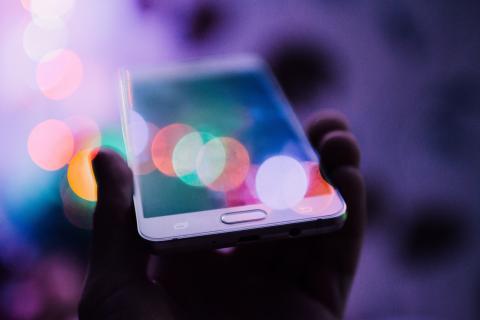
If you need another reason to embark on a digital detox this New Year, consider this: The California Department of Public Health (CDPH) just issued a warning about the hazards of radiation from cell phones. Although speculation about the health dangers of cell phone radiation has been swirling for years, the general public, myself included, has paid little attention…until now.
In the announcement of the new guidelines, issued December 13, CDPH Director Dr. Karen Smith states, “Although the science is still evolving, there are concerns among some public health professionals and members of the public regarding long-term, high use exposure to the energy emitted by cell phones.”
California isn’t the first state to release warnings regarding cell phone use and radiation. In 2015, the Connecticut Department of Public Health had similar concerns.
Cell phones emit radiation when they exchange signals from cell towers. Radiation is known to damage DNA and cells, which can lead to cancer, but it has long been thought that the radiation emitted from cell phones is not high enough to constitute a health threat. The CDPH statement notes that 95% of Americans own a cell phone, and the average age of first receiving a cell phone is now 10 years old. Our increasing dependence on cell phones, especially smart phones, may increase our risk of radiation-related illnesses and conditions, including all cancers.
Children are especially at risk, as their brains are still developing and might be particularly sensitive to radiation’s effects.
Sarah Buhr, writing for Tech Crunch, states that the warning was spurred by the release of a 2009 CDPH document, published after UC Berkeley professor Joel Moskowitz filed a lawsuit to make its findings public.
It should be stressed that the science on the health risks of low-level radiation from cell phones is inconclusive. In an opinion piece for Forbes, Geoffrey Kabat writes that the word “radiation,” though technically accurate in describing the energy emitted from cell phones, is usually reserved for “ionizing radiation,” “the part of the spectrum that has energies that are high enough to knock an electron out of an atom, causing ionization and possibly inducing cancer.” Although cell phones, microwaves, radios, and televisions all emit radiation, they are sources of “nonionizing radiation,” which does not change the structure of an atom.
Kabat writes that numerous studies negate a link between the radiation from cell phones and cancer, and says it’s “disingenuous” for the CDPH to refer to public concerns about cell phone radiation and “then go on to issue guidelines, which themselves instill fear, while tacitly acknowledging that there is no strong scientific support for concern.”
I’m not interested in succumbing to or promoting fear mongering, and since the evidence remains inconclusive, I probably won’t be tossing my cell phone any time soon. But while the debate among researchers and public health officials continues, I’m choosing to take a few precautions:
California and Connecticut DPH Recommendations for Limiting Cell Phone Radiation Exposure
- Don’t keep your phone in your pocket
- At night, keep your phone away from your bed, or turn it off
- Keep your cell phone away from your body
- When your cell phone signal is weak, radiation levels are higher, so limit cell phone use when there are two bars or fewer
- Decrease the amount of time you spend streaming video or audio clips
- Don’t use your phone to download or upload files
- Avoid products that claim to block radio frequency—according to the CDPH, they may actually increase it (the CDPH doesn't explain how)
- Limit the amount of time you spend on calls
- Text rather than talk








